Kiribati Flag Meaning
A red upper field with a golden frigatebird flying over a rising sun above blue and white wavy stripes, representing the Pacific sunrise, ocean waves, and the unique geography of this coral atoll nation spread across the international dateline.
- Continent
- Oceania
- Adopted
- 1979
- Ratio
- 1:2
- Colors
- red, gold, blue, white
- Designer
- Sir Arthur Grimble
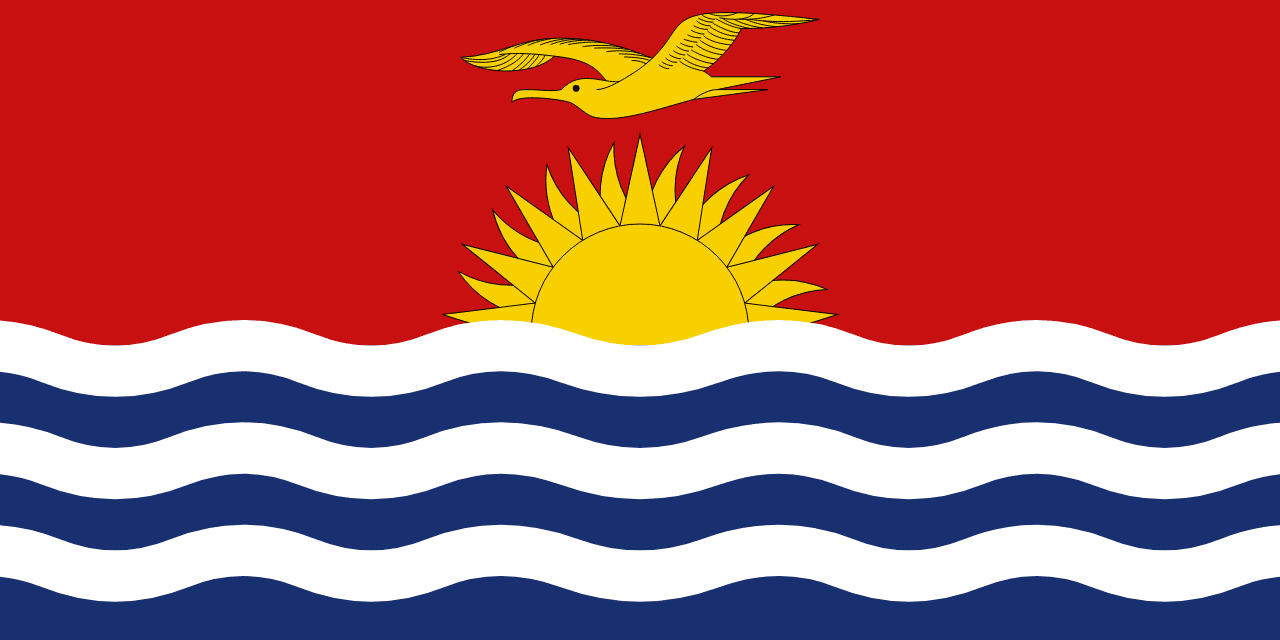
Symbolism
Golden Frigatebird: Represents the te eitei, a symbol of strength, freedom, and the marine environment central to I-Kiribati culture. The frigatebird is the national bird and represents power over land, sea, and air.
Rising Sun: Symbolizes Kiribati's position as one of the first places on Earth to see each new day, with the country straddling the international dateline in the central Pacific Ocean.
Red Upper Field: Represents the equatorial sun and the strength of the I-Kiribati people, as well as the courage needed to survive on small coral atolls in the vast Pacific Ocean.
Blue and White Waves: Represent the Pacific Ocean that surrounds and connects the 33 coral atolls of Kiribati, symbolizing the marine environment that sustains life and defines the national geography.
Pacific Identity: The overall design captures Kiribati's unique position as a nation of coral atolls spread across 3.5 million square kilometers of ocean, representing adaptation to marine life.
History
- Pre-Colonial: The Gilbert Islands were inhabited by Micronesians for over 2,000 years, developing unique navigation techniques and marine-based culture that would influence future national symbols.
- 1892: The Gilbert Islands became a British protectorate, later part of the Gilbert and Ellice Islands colony, using British colonial flags and symbols.
- 1937: Sir Arthur Grimble, a British colonial administrator, designed the colonial badge featuring the frigatebird and sun motif that would later inspire the national flag.
- 1975: The Ellice Islands separated to become Tuvalu, leaving the Gilbert Islands to continue toward independence as a separate entity with distinct cultural identity.
- July 12, 1979: The Gilbert Islands gained independence as Kiribati (pronounced Kiribas), adopting the current flag based on Grimble's colonial design but with enhanced symbolism.
- 1999: Kiribati moved the international dateline eastward to ensure all its islands shared the same calendar day, emphasizing unity across the scattered atolls.
- 2000s-Present: The flag has gained prominence in climate change discussions as Kiribati faces existential threats from rising sea levels affecting these low-lying coral atolls.
Trivia
- Kiribati is one of only four countries to straddle all four hemispheres (Northern, Southern, Eastern, and Western), making its flag represent truly global geographic coverage.
- The country consists of 33 coral atolls spread across 3.5 million square kilometers of ocean - an area larger than India - but with only 811 square kilometers of land.
- Kiribati moved the international dateline in 1999 to be the first country to enter the new millennium, making the sunrise symbolism on the flag particularly meaningful.
- The frigatebird can fly for weeks without landing, making it a perfect symbol for a nation of islands scattered across vast oceanic distances.
- The flag represents one of the countries most threatened by climate change, with the highest point only 4 meters above sea level on the coral atolls.
- Kiribati's flag designer, Sir Arthur Grimble, wrote the classic book 'A Pattern of Islands' about his experiences in the Pacific, helping preserve I-Kiribati culture.
- The flag appears on coins and stamps that are popular with collectors worldwide, providing important revenue for this small island developing state.
- Christmas Island (Kiritimati), part of Kiribati, is the world's largest coral atoll and was the site of British and American nuclear testing, adding complexity to the flag's symbolism.
- Traditional I-Kiribati navigation techniques using stick charts and star patterns are reflected in the flag's emphasis on maritime and celestial elements.
- The flag represents a country where fishing provides most of the protein in the diet, with the frigatebird symbolizing the marine environment that sustains life.
- Kiribati's phoenix islands are a UNESCO World Heritage marine protected area, making the flag a symbol of ocean conservation efforts.
- The country's name 'Kiribati' is the I-Kiribati pronunciation of 'Gilberts,' connecting the flag to both indigenous culture and colonial history.
- Kiribati has been purchasing land in Fiji as a potential refuge for climate-induced migration, making the flag potentially represent a nation preparing for displacement.
- The flag appears at Pacific Island Forums where Kiribati advocates for small island developing states and climate action on behalf of vulnerable nations.
- Traditional I-Kiribati dancing often incorporates movements that mimic the frigatebird's flight, connecting the flag symbol to living cultural practices.
Related Countries
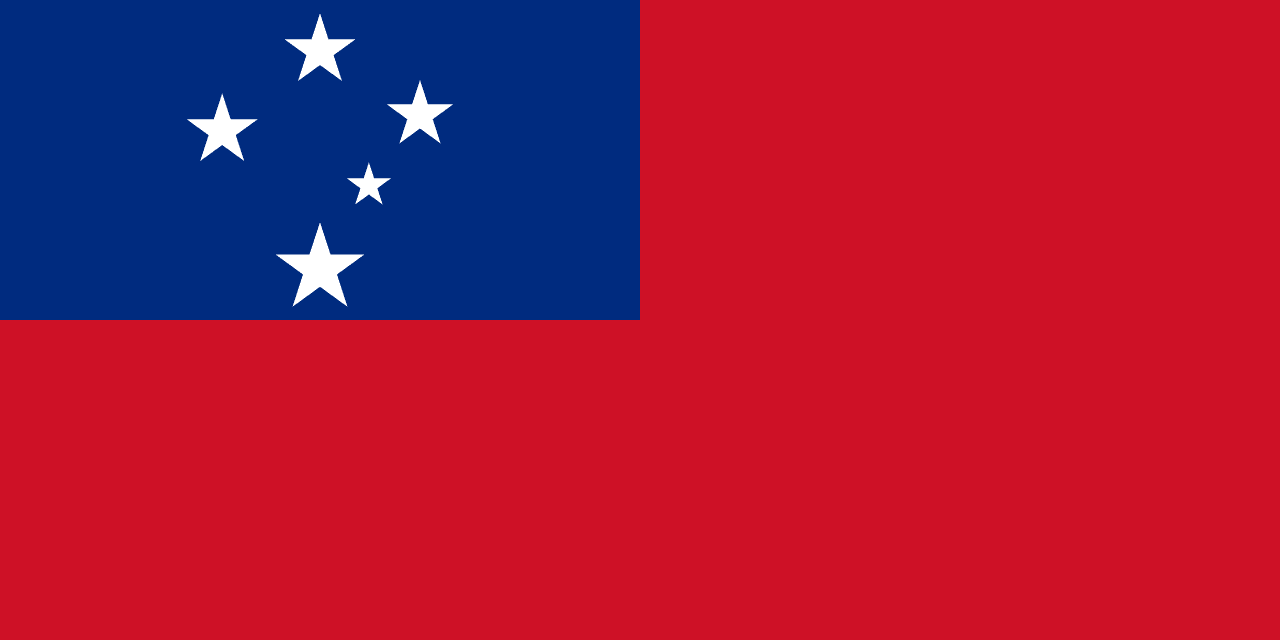
Samoa
Oceania
A red field with a blue rectangle in the upper hoist containing the Southern Cross constellation in white. The flag reflects Samoan heritage and its place in the South Pacific.
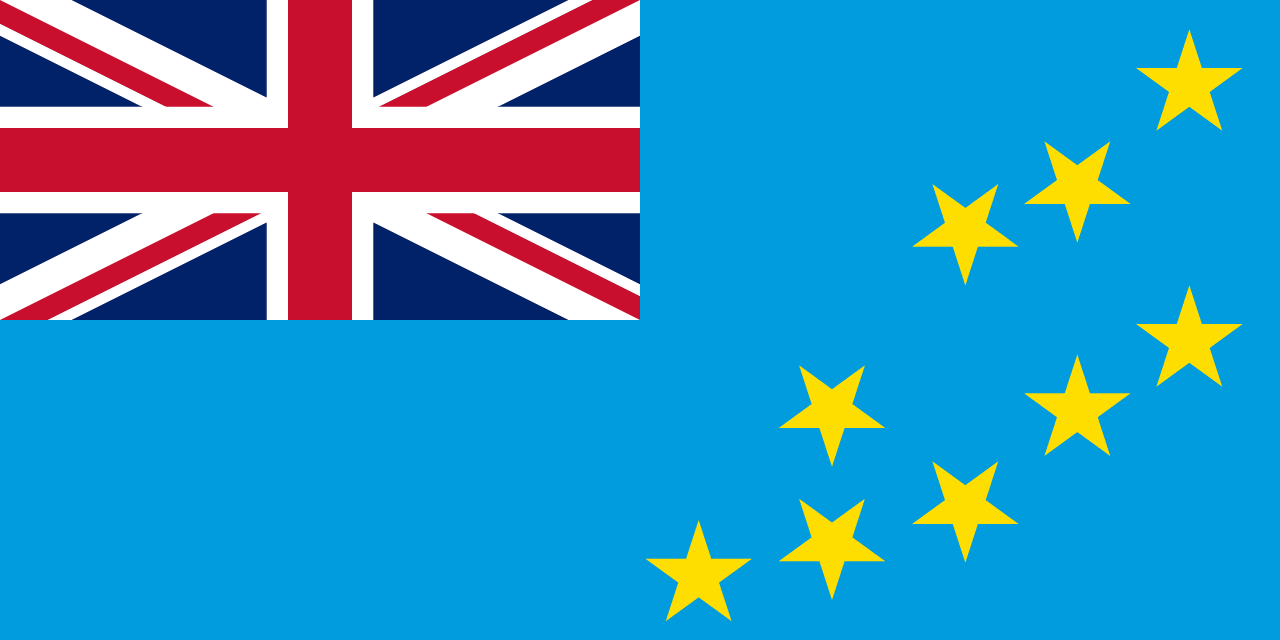
Tuvalu
Oceania
A light blue field with the Union Jack in the canton and nine yellow stars representing the nine atolls of Tuvalu, symbolizing the Pacific Ocean that surrounds the islands, the historical connection to Britain, and the geographical arrangement of the island nation in the central Pacific.
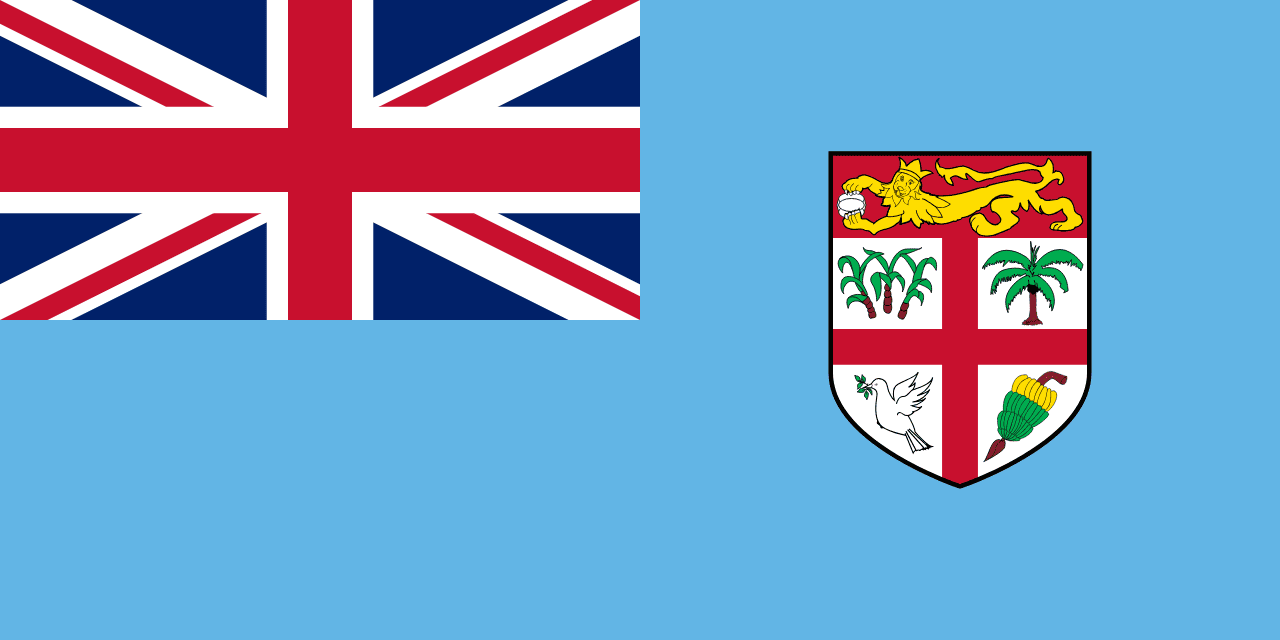
Fiji
Oceania
A light blue field with the Union Jack in the canton and Fiji's coat of arms on the fly side, representing the Pacific Ocean, British heritage, and the agricultural and maritime traditions of this island nation.
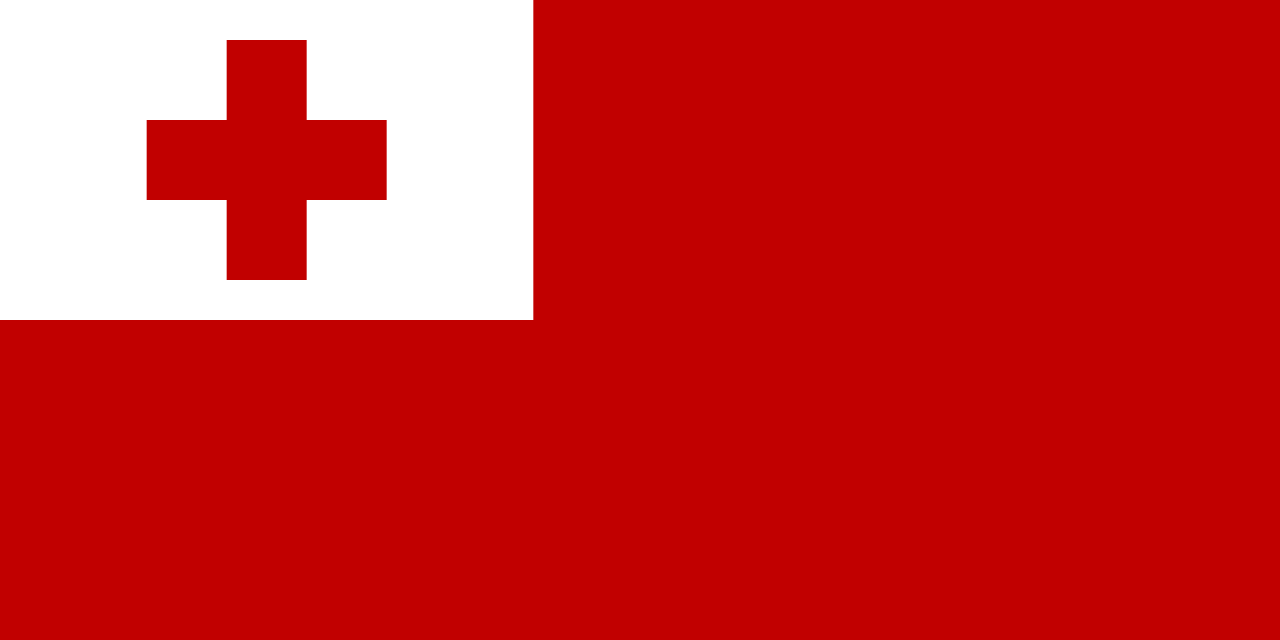
Tonga
Oceania
A red field with a white canton containing a red cross, representing the blood of Christ and the sacrifice of Jesus for mankind, the purity of Christian faith, and the deeply Christian identity of the Kingdom of Tonga as a Pacific island nation that was never colonized.
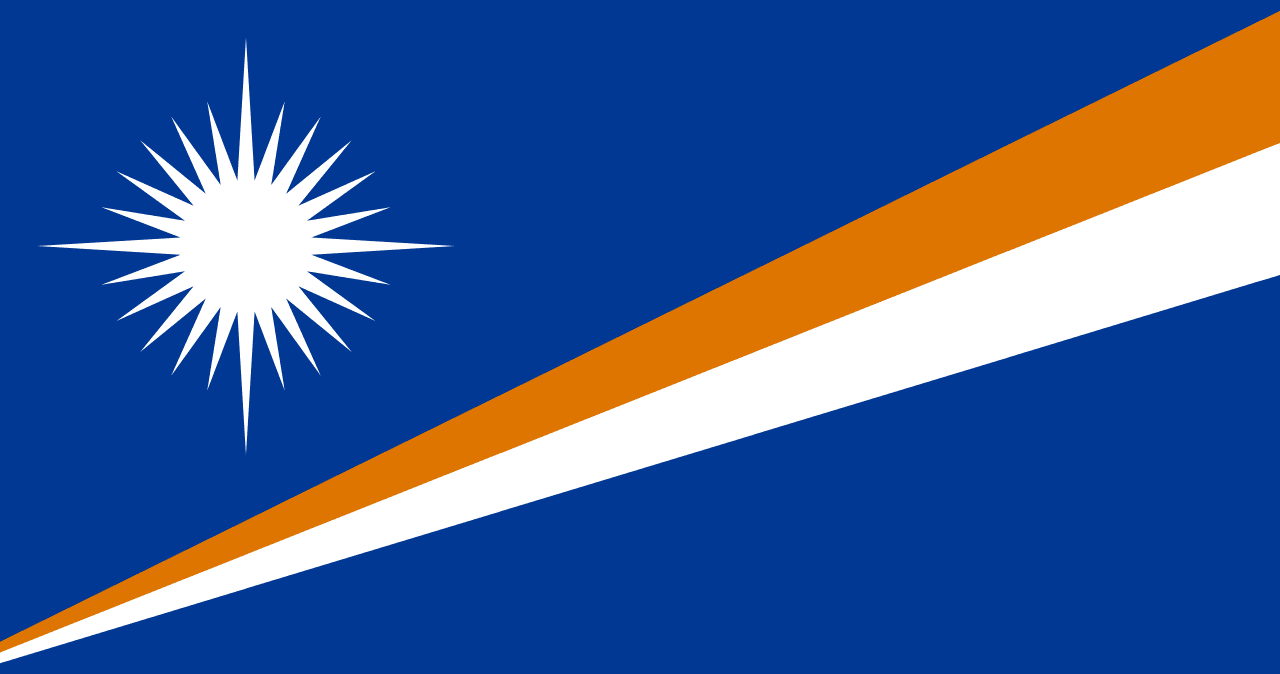
Marshall Islands
Oceania
A blue field with diagonal orange and white stripes extending from the lower left, and a white 24-pointed star in the upper left corner, representing the Pacific Ocean, the island chains, and the Christian faith of this coral atoll nation.
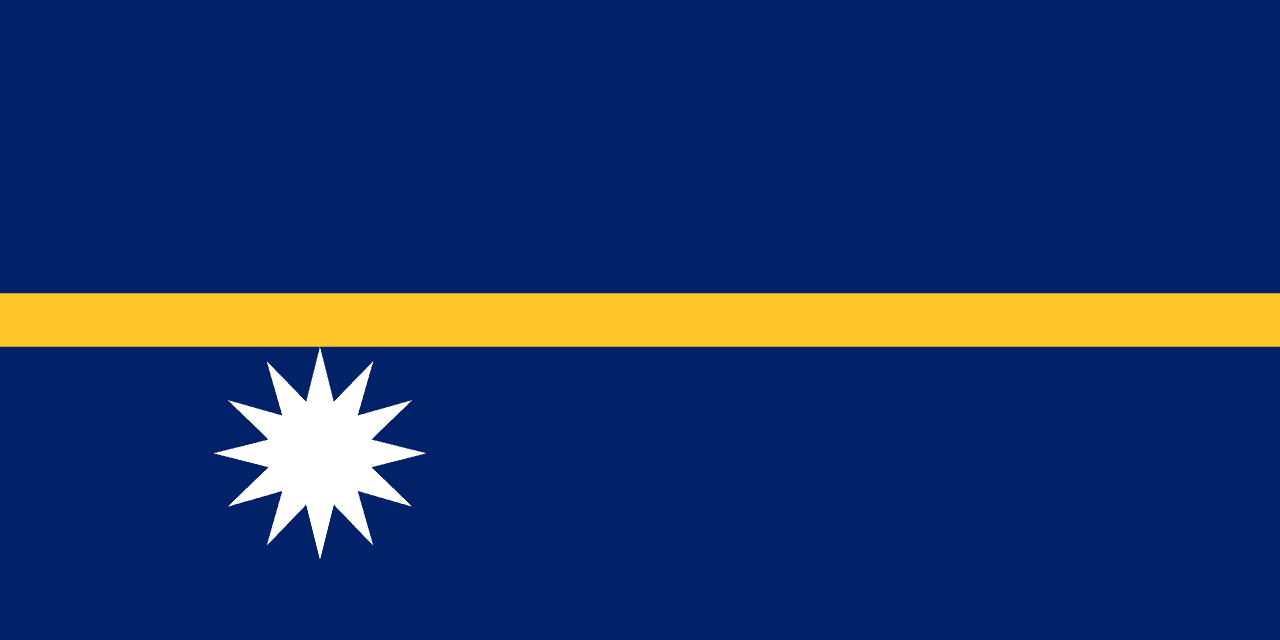
Nauru
Oceania
A blue field with a horizontal yellow stripe across the center and a white twelve-pointed star below the stripe near the hoist. The design reflects Nauru’s position just south of the equator and its cultural identity.